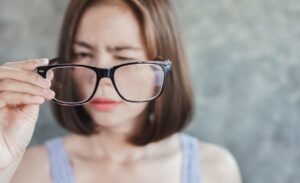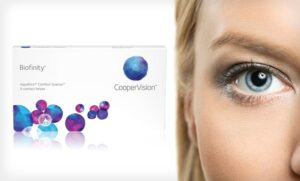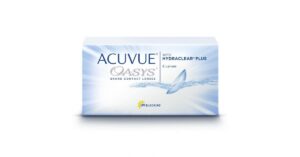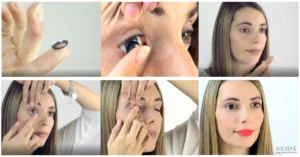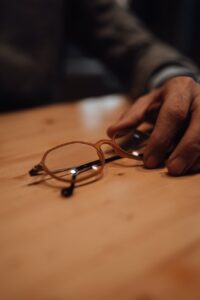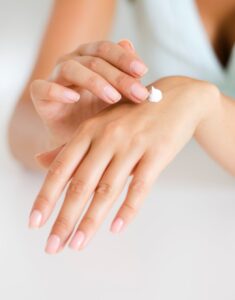The Importance of Cleaning Contact Lenses
To maintain optimal eye health and ensure comfortable vision, contact lens wearers need to prioritize the regular cleaning of their lenses. Cleaning contact lenses not only removes dirt and debris but also helps to prevent the buildup of harmful bacteria that can lead to eye infections and other complications.
Why Cleaning Contact Lenses is Essential
Cleaning contact lenses is vital because it helps to maintain the hygiene and clarity of the lenses. Throughout the day, contact lenses accumulate various substances, including proteins, lipids, and other debris from the tear film and the environment. If these substances are not properly cleaned, they can accumulate on the lens surface and cause discomfort, blurred vision, or even corneal infections.
By cleaning contact lenses on a daily basis, wearers can remove these deposits, ensuring that the lenses remain clear and comfortable to wear. Cleaning also helps to remove any potential irritants that may have adhered to the lens surface, reducing the risk of eye redness, dryness, or other forms of discomfort.
Potential Risks of Not Cleaning Contact Lenses
Failing to clean contact lenses regularly can have serious consequences for eye health. When lenses are not properly cleaned, they can become a breeding ground for bacteria, viruses, and fungi. These microorganisms can lead to eye infections such as conjunctivitis, keratitis, or even more severe conditions that may require medical intervention.
Moreover, the accumulation of deposits on the lens surface can compromise the visual clarity of the lenses, leading to blurry or distorted vision. This can affect daily activities, such as reading, driving, or working on a computer.
To ensure the long-term health of your eyes and the optimal performance of your contact lenses, it is crucial to adhere to a proper cleaning routine. By following the recommended cleaning guidelines and using the appropriate cleaning solutions, you can minimize the risks associated with wearing contact lenses and enjoy clear, comfortable vision.
In the next section, we will delve into the basics of cleaning contact lenses, including hand hygiene, cleaning solutions, and storage cases. Stay tuned to learn more about the best practices for maintaining the cleanliness and longevity of your contact lenses. For more information on how to remove contact lenses, check out our article on how to remove contact lenses?
Understanding the Basics of Cleaning
To ensure optimal eye health and prolong the life of your contact lenses, it’s essential to understand the basics of cleaning. Proper cleaning techniques help remove debris, bacteria, and other potential irritants that can accumulate on the lenses. In this section, we will discuss three key aspects of contact lens cleaning: hand hygiene, cleaning solutions, and storage cases.
Hand Hygiene
Before handling your contact lenses, it’s crucial to practice good hand hygiene. Wash your hands thoroughly with mild, fragrance-free soap and water. Avoid using any products that could leave residue on your hands, such as lotions or creams. Dry your hands with a lint-free towel to prevent lint or fibers from transferring to the lenses.
Proper hand hygiene is essential to minimize the risk of introducing harmful bacteria or dirt onto the lenses, which can lead to eye infections. For more information on how to safely remove contact lenses, refer to our article on how to remove contact lenses?
Cleaning Solutions
Cleaning solutions play a crucial role in maintaining the cleanliness of your contact lenses. There are two primary types of cleaning solutions: multipurpose solutions and hydrogen peroxide-based solutions.
- Multipurpose solutions are versatile and can be used for cleaning, rinsing, disinfecting, and storing contact lenses. These solutions are convenient and often recommended for daily use. Follow the instructions provided by your eye care professional and the manufacturer for proper usage.
- Hydrogen peroxide-based solutions provide an extra level of disinfection. These solutions use hydrogen peroxide to neutralize bacteria and microorganisms on the lenses. It’s important to note that hydrogen peroxide-based solutions require a specific case with a built-in neutralizing disc or basket to ensure the neutralization process occurs. Failure to follow the instructions can result in eye irritation and discomfort.
Regardless of the type of cleaning solution you use, always follow the recommended guidelines provided by your eye care professional and the solution manufacturer. Remember to replace the solution in your case regularly, as instructed, to maintain optimal cleanliness. For more information on contact lens expiration and care, refer to our article on do contact lenses expire?
Storage Cases
Proper storage of contact lenses when they are not in use is crucial for maintaining their cleanliness and preventing contamination. Storage cases should be cleaned regularly and replaced every three months or as recommended by your eye care professional.
To clean your storage case, rinse it with fresh cleaning solution (not tap water) and gently rub the case to remove any debris. Allow the case to air dry, keeping it open and inverted to prevent the accumulation of moisture.
It’s important to note that storage cases should never be rinsed with tap water, as it may contain microorganisms that can cause eye infections. For more information on how to care for your contact lenses and how they work, refer to our article on how do contact lenses work?
By understanding the basics of cleaning, including proper hand hygiene, the use of appropriate cleaning solutions, and regular maintenance of storage cases, you can ensure the cleanliness and longevity of your contact lenses. Remember to follow the guidelines provided by your eye care professional and consult them if you have any specific concerns or questions.
Step-by-Step Guide to Cleaning Contact Lenses
Properly cleaning your contact lenses is essential for maintaining good eye health. Follow these simple steps to ensure your lenses are clean and safe for continued use.
Step 1: Remove the Contact Lenses
Before starting the cleaning process, make sure your hands are clean and dry. Wash your hands thoroughly with mild soap and water, then dry them with a lint-free towel. This step is crucial to prevent any dirt or bacteria from getting into your eyes or onto your lenses.
To remove your contact lenses, gently pull down your lower eyelid with one hand and use your other hand to carefully slide the lens down onto the white part of your eye. Pinch the lens gently between your thumb and index finger and lift it away from your eye. If you’re unsure about how to remove your lenses properly, check out our article on how to remove contact lenses for detailed instructions.
Step 2: Rinse with Solution
Place the lens in the palm of your hand and apply a few drops of multipurpose contact lens solution. Using your index finger, gently rub the lens in a circular motion. This helps to remove any debris, protein deposits, or other buildup that may have accumulated on the surface of the lens.
Rinsing the lens with the solution also helps to ensure that the cleaning agent is evenly distributed on the lens. This step is crucial for effective disinfection and cleaning.
Step 3: Rub the Lenses
To further enhance the cleaning process, it’s important to give your lenses a thorough rub. Using your index finger, rub each side of the lens in a back-and-forth motion for about 20 seconds. This helps to dislodge any stubborn deposits and ensures that the entire surface of the lens is cleaned.
Be gentle while rubbing the lenses to avoid damaging them. Avoid using excessive pressure or sharp objects that could scratch the lens surface.
Step 4: Rinse Again
Once you’ve finished rubbing the lenses, rinse them again with the multipurpose solution. This step helps to remove any loosened debris and residual cleaning solution from the lens.
Ensure that both sides of the lens are thoroughly rinsed to remove any potential irritants or leftover cleaning agents that could cause discomfort or eye irritation.
Step 5: Store the Lenses
After rinsing, place each lens in its designated clean contact lens case. Fill the case with fresh solution, making sure to completely submerge the lenses. Close the case tightly to prevent any contaminants from entering.
It’s important to store your lenses in a clean case to avoid any potential contamination. Remember to replace the solution in your case every time you clean your lenses and never reuse old solution. For more information on replacing solutions and cases, refer to our article on contact lens care.
By following these step-by-step instructions, you can ensure that your contact lenses are properly cleaned and ready for safe and comfortable wear. Remember to adhere to the recommended cleaning schedule, avoid common cleaning mistakes, and replace your solutions and cases regularly for optimal eye health.
Tips for Effective Cleaning
To ensure optimal eye health and maintain the quality of your contact lenses, it’s important to follow effective cleaning practices. Here are some essential tips to keep in mind:
Follow the Recommended Schedule
Contact lens manufacturers provide specific cleaning and replacement guidelines for each type of lens. It’s crucial to adhere to these recommendations to prevent the buildup of deposits on your lenses and reduce the risk of eye infections. Follow the suggested cleaning schedule, which typically involves daily cleaning and disinfection, as well as regular replacement of lenses and storage cases. Remember, not all contact lenses have the same lifespan, so it’s important to check the expiration date and replace them accordingly. For more information on contact lens expiration, refer to our article on do contact lenses expire?.
Avoid Common Mistakes
When cleaning your contact lenses, it’s essential to avoid common mistakes that can compromise their cleanliness and your eye health. Here are a few things to keep in mind:
- Don’t reuse or top off solution: Always discard the used solution and use a fresh solution each time you clean your lenses. Topping off the solution can introduce bacteria and reduce the effectiveness of the disinfectant.
- Avoid using tap water: Tap water may contain microorganisms that can lead to serious eye infections. Only use recommended contact lens solutions to rinse, clean, and store your lenses.
- Don’t use saliva or homemade solutions: Saliva and homemade cleaning solutions are not sterile and may introduce harmful bacteria to your lenses.
- Avoid sleeping or swimming with lenses: Removing your lenses before sleep or swimming is essential to reduce the risk of eye irritation, infections, and damage to the lenses. For more information on swimming with contact lenses, refer to our article can you swim with contact lenses?.
Replace Solutions and Cases Regularly
Using fresh contact lens solutions and regularly replacing your storage case is crucial for effective cleaning. Contact lens solutions can lose their effectiveness over time, so it’s important to follow the recommended expiry date and replace them accordingly. Additionally, storage cases can accumulate bacteria and other contaminants, even with regular cleaning. Replace your storage case every three months or as recommended by your eye care professional. For more information on cleaning contact lenses and related topics, refer to our article on how to clean contact lenses and other useful resources.
By following these tips, you can ensure that you are properly cleaning your contact lenses and maintaining optimal eye health. Remember, if you experience any discomfort, redness, or persistent issues with your contact lenses, it’s important to consult with your eye care professional for further guidance and assistance.
Troubleshooting Common Cleaning Issues
Even with proper cleaning practices, contact lens wearers may sometimes encounter issues that affect their vision and eye comfort. Here are some common cleaning issues and how to address them:
Cloudy or Blurry Vision
If you experience cloudy or blurry vision after cleaning your contact lenses, there could be a few possible causes:
- Residue on the Lenses: Insufficient cleaning or rinsing of the lenses may leave behind residue, causing vision problems. Make sure to follow the step-by-step cleaning guide provided by your eye care professional, paying close attention to thorough rinsing.
- Expired Cleaning Solution: Using expired or outdated cleaning solutions can lead to lens deposits and decreased clarity. Always check the expiration date on your cleaning solution bottle and replace it as recommended.
- Hard Water Deposits: If you live in an area with hard water, mineral deposits can build up on your contact lenses, causing cloudiness. Consider using a saline solution or specific contact lens cleaning products designed to remove hard water deposits.
If cloudy or blurry vision persists despite troubleshooting, it’s important to consult your eye care professional for further evaluation.
Discomfort or Irritation
Contact lens wearers may occasionally experience discomfort or irritation even after cleaning their lenses. Here are a few potential reasons and solutions:
- Dirty or Damaged Lenses: Inspect your lenses for any visible debris, scratches, or tears. If you notice any issues, replace the lenses with a fresh pair. If the discomfort persists, it’s advisable to consult your eye care professional.
- Solution Sensitivity: Some individuals may be sensitive to the preservatives or ingredients in their cleaning solutions. Consider switching to a preservative-free or alternative solution recommended by your eye care professional.
- Improper Lens Handling: Ensure proper hand hygiene and technique when handling your contact lenses. Contaminated hands or improper lens insertion can cause discomfort. Review the correct procedure for inserting contact lenses to minimize discomfort.
If discomfort or irritation continues, consult your eye care professional to determine the underlying cause and receive appropriate guidance.
Persistent Redness or Infection
Persistent redness or signs of infection after cleaning your contact lenses can be indicative of a more serious issue. If you experience these symptoms, take the following steps:
- Remove the Lenses: Remove your contact lenses immediately and abstain from wearing them until you’ve consulted your eye care professional.
- Avoid Self-Treatment: Refrain from using contact lenses or any cleaning solutions until you’ve received guidance from your eye care professional. Self-treatment can potentially worsen the condition.
- Seek Professional Advice: Schedule an appointment with your eye care professional as soon as possible. They will be able to examine your eyes, diagnose the issue, and recommend appropriate treatment.
Remember, timely professional care is crucial when dealing with persistent redness or signs of infection.
By addressing these common cleaning issues, you can maintain optimal eye health and ensure comfortable, clear vision while wearing your contact lenses. If you have any concerns or questions, reach out to your eye care professional for expert advice.

